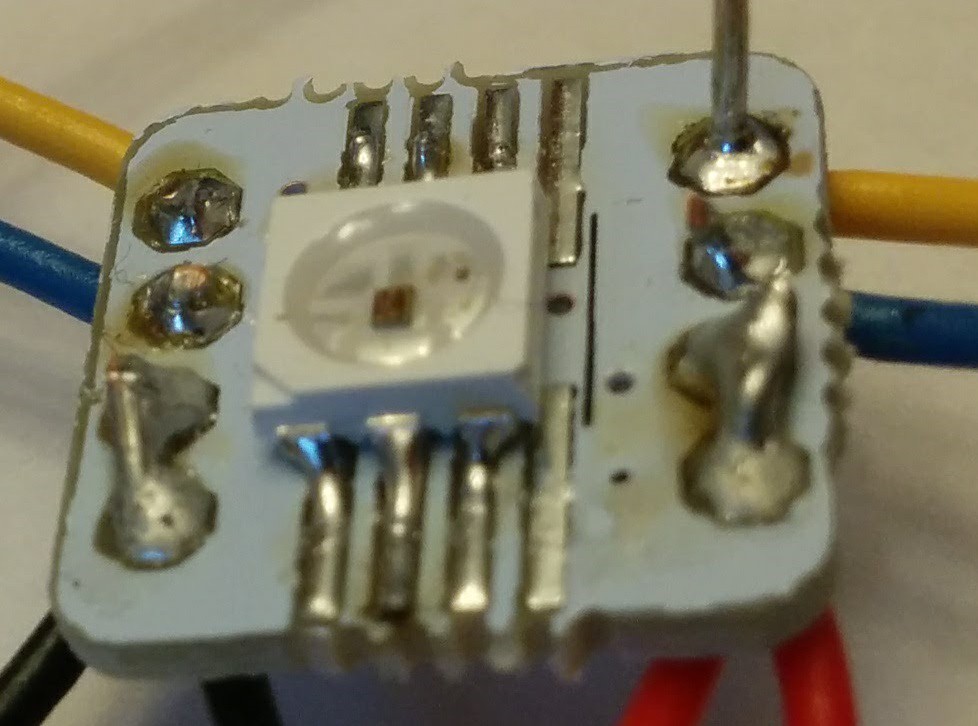by this point i already had already sent out for a small reel of APA102 addressable leds. my eventual plan is to populate a custom board that will bolt to the acrylic panels. but for now i need to prototype with them. i tried hand soldering some wires, that failed...miserably... I didn't even take photos. i also didnt have any breakout boards for the 6 pin apa102s. but, the 8 pin soic breakouts i made for other things was close enough.

i wired up two together and got down to the business of making a simple hue fader. now, here is where i fell down the rabbit hole. APA102s use RGB to control color, and i wanted Hue, Saturation, Value (HSV). the math to do this isnt particularly complicated, but doing it on an 8 bit processor (like the atmega328p) can be a bit time consuming.
ill save you the rabbit hole: http://www.vagrearg.org/content/hsvrgb has a great write up of the fastest way to get from one to the other. including Open Source code for the atmega328p.
for this first step though a simple modification to the strandTest arduino library from adafruit was enough.
#include <Arduino.h>
#include <Adafruit_DotStar.h>
#include <SPI.h> // COMMENT OUT THIS LINE FOR GEMMA OR TRINKET
#define NUMPIXELS 2 // Number of LEDs in strip
bool showing;
void setup() {
uint8_t rgb[3];
uint8_t val;
//volatile to force debugger to cache the value.
volatile uint16_t top,x;
strip.begin(); // Initialize pins for output
strip.show(); // Turn all LEDs off ASAP
for (int i=0;i<NUMPIXELS;i++) strip.setPixelColor(i,0);
rgb[0]=0x00; // red
rgb[1]=0xff; // green
rgb[2]=0x00; // blue
val=1;
x=2;
top=255;
while(1)
{
rgb[x]=rgb[x]+val;
if (rgb[x]==top)
{
//if counting up, now count down.
if (val==1) { val=-1; top=0; }
else { val=1; top=255;}
// and modify the next primary color
if (x==0) x=2;
else x=x-1;
}
strip.setPixelColor(0,strip.Color(rgb[0],rgb[1],rgb[2]));
// change the RGB order to get an out of phase hue.
strip.setPixelColor(1,strip.Color(rgb[1],rgb[2],rgb[0]));
strip.show();
delay(10);
}
void loop() {
}
the code replicates the following RGB values.
the acrylic from the last post was hand filed to sit on the leds and that led to:
onto the next acrylic revision.
 bveina
bveina
Discussions
Become a Hackaday.io Member
Create an account to leave a comment. Already have an account? Log In.